13 Comments on Family Visits in Chennai, last added: 3/21/2012
Roo is a crafty kind of girl. When she doesn't want to be found, she heads beneath her father's trailer where she can look at her treasures and put her ear to the ground and listen to the earth. It is here where readers are introduced to Roo, as her neighbor Mrs. Quick is talking to the police about what happened above her. The officer tells Mrs. Quick that Roo has an uncle (a rich one) who is willing to take her in. This is news to Roo, as she has never been told about any family...it's always been Roo, her father and a various string of girlfriends. After a short stint in foster care, Roo is gathered up by her Uncle's assistant Ms. Valentine. They travel to the island of Cough Rock on the St. Lawrence where he uncle lives in the old St. Theresa's Children's Hospital. Roo is not so happy with the boat ride as she has never learned to swim. Once she arrives, she realizes that the water is the least of her worries. Her uncle wants nothing to do with her, she is forbidden from entering the East Wing of the building, there are the unexplainable sounds, and before long she is under the eagle eye of her tutor Mrs. Wixton who loves to gossip about Roo's family. But Roo is a wily one, and rules have never really applied to her, and she soon learns to evade Mrs. Wixton and uncover some of the secrets of Cough Rock. Inspired by The Secret Garden, The Humming Room is a ghost story of sorts coupled with Roo's coming of age. Ellen Potter has written a creepy story that ultimately has hope at its heart.
Monday was my rebirthday. It was also my 61st birthday. I'd decided in advance to designate it my rebirthday—it seemed like a good idea since I'm still returning from a flirtation with death. I'd establish a milestone add structure to my recovery. I didn't restrain myself from telling friends and family who came by yesterday that it was my rebirthday. At the same time, I tried not to have preconceptions of what a rebirthday might be like, just to stay open to possibilities. The day came and went and it was wonderful. Yet while reflecting on how what I might present it here the following day, I almost missed the point, the wonder of it all. I didn't feel as good as I would have liked. I guess I imagined that after my rebirthday, my regular energy, or better yet, some wonderful new energy, would return - and it didn't. In fact, I was tired all day - which, of course, colored my perception of the previous day. My plan for this reflection was immersed in stories of what didn't happen on my rebirthday: if only the dinner guests at dinner had gathered in the garden first, if only this or that, I can't even remember what now, had happened, the day would have perfect. I even spent some time trying to figure out how I could share some very personal details in an impersonal way. Fortunately, by the time I sat down to write, I realized what I'd lost sight of. Here's what my rebirthday was really like. I woke up early and went to see how the compass garden the boys made and planted the previous afternoon was doing. It was flourishing!
Liam came out with me and picked the first ripe tomato. (Well, it wasn't quite that magical. The tomato plants had already been in the garden for a month or so.) The tomato joined some others as part of the huevos rancheros Tom made for breakfast. I spent most of the day in the garden. Friends came to visit. The new flowers, lobelia, echinacea, yarrow, coreopsis, autumn sage, gazania, gloriosa daisies and petunias, free of their constricting pots, opened outward in the perfect sunshine. The breeze played the wind chimes. The dog worked on her bone in the shade of the redwood. At lunc
On one of my first morning walks I looked up and saw this face smiling back at me :)
The Cape is filled with charm~
Clap on!
Clap off!! :)
~an artsy shade~
~wonderful pottery at a shop~

By: Camille,
on 6/15/2011
Blog: Book Moot
( Login to Add to MyJacketFlap)
JacketFlap tags:
gardens, Add a tag
 Water Weed Wait Water Weed Wait  by Edith Hope Fine and Angela Demos Halpin, illustraed by Colleen Madden. Tricycle, 2010 (review copy provided by the publisher) by Edith Hope Fine and Angela Demos Halpin, illustraed by Colleen Madden. Tricycle, 2010 (review copy provided by the publisher)
School gardens are often started but tend to languish despite the best of intentions of teachers, students and parents. This book might encourage a community to try again.
The children at the Pepper Lane Elementary are inspired by a visit from Miss Marigold, the garden lady to start a garden at their school. They work together with help from adults. Even Mr. Barkley, the school's cranky neighbor, lends his gardening expertise. Building a garden is hard work. Ground must be cleared and prepared then seeds are planted and watered. It takes patience to wait for vegetables to grow and flowers to bloom but their efforts are rewarded and celebrated at the end. Suggestions for starting a school garden are shared.
 A Garden for Pig A Garden for Pig   written by Kathryn K. Thursman, illustrated by Lindsay Ward, Kane Miller, 2010 written by Kathryn K. Thursman, illustrated by Lindsay Ward, Kane Miller, 2010
Pig lives on an apple farm. His owner feeds him every kind of apple delicacy but Pig is tired of apples and longs for the vegetables growing in a nearby garden. When Pig manages to get into the garden he is in heaven. He discovers a passion for squash. When Mrs. Pippins discovers him in the garden, she secures him in his muddy pig pen and he cannot escape. He prepares the ground in his pen for planting and "passes" the seeds from the squash he ate. He patiently waits and before long has his own squash garden. Thursman follows the story with two pages of organic gardening tips. Illustrator, Ward's apple trees are filled with apples and text from apple recipes. Pig's method for planting his seeds is ve

There used to be a beautiful garden on the corner of our road. Not the sort of cottagey, lush, chaotic garden I’d rather like myself but a traditional, rather formal combination of greensward and floribunda roses with a few tastefully placed specimen shrubs. There was also a gleaming penny farthing as a feature, incongruous but appealing, always delicately outlined with tiny fairy lights at Christmas.
The creator moved away last year and yesterday the new occupants committed an act of dire destruction. Diggers arrived and the entire garden had gone by 11am. Perhaps the owners are going to create something wonderful themselves. Judging by the number of huge white delivery sacks sagging in the wreckage, however, I suspect that they want something low maintenance – a parking lot, for example.
Far be it from me to decry progress or personal freedom of choice. The new owners clearly need something other than a formal garden and fair enough; it is their property. Nonetheless, I wept over the glorious rose bushes which I hope have at least reached the municipal composter and I find myself asking questions about our responsibility to the community in our public acts. That garden gave me great joy and I used to tell the creator so when he was out there tending it. He still lives locally so he will have the pain of seeing that his work has been destroyed. How much should we reign in our personal desires out of consideration for others? A big question. How much value should we put on that which already exists when it stands in the way of something new? It’s a question which town planners and developers constantly battle with and which Capability Brown and his sponsors didn’t seem to consider at all!
What has all this to do with children’s books?!
The other day I did one of my occasional reccies in Waterstones. What’s being promoted, what’s new, what haven’t I read that I should have etc etc. To be honest, I was appalled. There was nothing like the wide selection carried by my local independent. That’s normal but this time the range was even narrower than usual and the blocks of books by the usual suspects were vast. More shocking, in my opinion, was the increased shelf-space given over to the Snot and Bogey brigade. The desperation to publish books that boys will read is getting alarming. Humour revolves around poo and flatulence (we now have the adventures of a farting dog, for goodness sake!) and history is degenerating into pisstory. I’ve recently had a short fictionalised biography of Elizabeth 1st published. ('Elizabeth 1st - The Story of the Last Tudor Queen') Imagine my delight at my most recent school visit when I was approached by a child who wanted to ask a question about it. And the question? Was it true that Elizabeth 1st had used the first toilet ever? Elizabeth 1st must be one of the most formidable personalities our national history offers – and a child’s interest has somehow been reduced to where she went to the loo!
It seems to me that what happened to my neighbour’s garden is happening to children’s literature. In pursuing current agendas (getting boys to read at any cost, for example) we’re trashing a great tradition. I think of the heritage that lies behind the early readers that are being churned out now and I’m asking questions. I’m a left-wing, liberal, armchair revolutionary but I’m also a Christian (albeit a heretical one!) and I’m thinking about what it says in Philippians 4: 8 ...’whatever is true, whatever is noble, whatever is right, whatever is pure, whatever is lovely, whatever is admirable – if anything is excelle
This post continues our visit to New Orleans. Here are the posts related to our trip:
1) Wonderful Food and Restaurants
2) The French Quarter and Street Bands
3) The Garden District
4) Shopping, Books, and Miscellaneous
5) People and Animals
On our third day in New Orleans, we took a taxi from our hotel to the Garden District and embarked on a walking tour.
The area was originally developed between 1832 to 1900. It may be one of the best preserved collection of historic southern mansions in the United States. The 19th century origins of the Garden District illustrate wealthy newcomers building opulent structures based upon the prosperity of New Orleans in that era. (National Trust, 2006) http://en.wikipedia.org/wiki/Garden_District,_New_Orleans The homes and yards were beautiful, and as a picture is worth a thousand words, I'll let them speak for themselves. After our walking tour of the Garden District, we stopped in at the local bookstore located in "The Rink" and purchased some books, which I'll list in a future post. 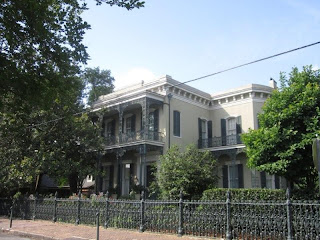 Throughout the neighborhood are beautiful large oak trees and a wide variety of other plants and flowers. Many of the homes have ornate fences and metalwork on the balconies as well as beautiful columns and architectural details. I also loved looking at the paint colors; some houses had subtle variations of colors and others were very bold in their use of color. And everywhere, beautiful trees! 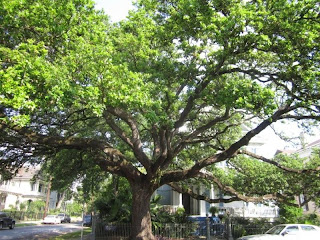 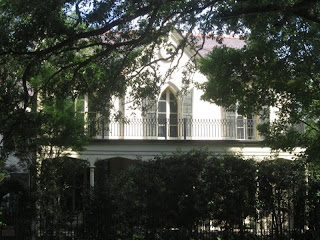 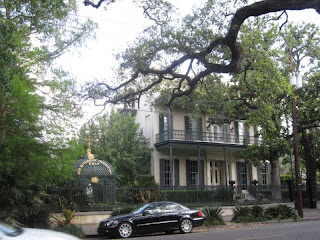 ![]() 0 Comments on New Orleans: The Garden District as of 1/1/1900
0 Comments on New Orleans: The Garden District as of 1/1/1900
Some new books about gardens and growing things.
 My Friends the Flowers My Friends the Flowers  by William Lach, illustrated by Doug Kennedy. Abrams, 2010.
This splendid picture book channels Ub Iwerks and Max Fleischer while imparting real facts and information about roses, hollyhocks, snapdragons, morning glories and more. Lach's writing bounces with rhyme and highlights a quality of each featured bloom.
Marigold SCARES all the bugs
He likes to make them run.
Sunflower's big happy face basks in the morning sun. Doug Kennedy must have draw some inspiration from Disney's Silly Symphonies. His flowers preen and smile. Bugs add comedy to the scenes. The book ends with a glossary of featured flowers, complete with photographs, facts and the scientific names. Directions for growing a bug scaring garden (marigolds,) a sun loving garden (sunflowers,) and a fast growing garden (morning glories) are also included.
 A Garden of Opposites A Garden of Opposites  by Nancy Davis. Schwartz & Wade, 2009
Books that introduce the concept of "opposites" are a tradition in the picture book landscape for very young children.
Nancy Davis offers familiar images from the world of gardening translated into bright colors and simple, mostly symmetrical shapes.
Worms, spades, garden shears, bugs and butterflies are used to present opposite concepts like, inside and outside (the inside of an apple and the outside,) open and closed (an

By: Peggy King Anderson,
on 4/19/2010
Blog: A Sound from My Heart
( Login to Add to MyJacketFlap)
JacketFlap tags:
Writing tips, Lisa Graff, gnomes, SCBWI conference, Jay Asher, Laini Taylor, gardens, Michael Bourret, Jordan Brown, Peter Brown, Sara Crowe, Paul Rodeen, Edward Necalsulmer IV, Add a tag
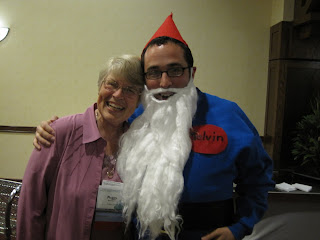
One week ago Saturday, I stepped into a Story Garden. Immediately, like magic, roots grew down into the ground, connecting me to a rich substrata of writers, editors, agents, all with amazing stories to tell. As I wandered the Story Garden (known to some as the SCBWI Western Washington Writing and Illustrating for Children Conference) flowers of every sort shot up out of the ground at my very feet. I watched with amazement as one particularly bright colored blossom (Genus Lainius taylorus, fuschia petals, quite lovely) began to speak. Wondrous tales of a circus troupe within her very being, struggling to emerge, wove a spell around all of us in the Story Garden, prompting great excitement at the possibilities for each of us, ready to bring forth our own fruit.
As the day wore on, and we were watered, fertilized and shone upon by Master Gardeners Jay Asher, Peter Brown, Edward Necalsulmer IV, Jordan Brown, Lisa Graff, Paul Rodeen, Michael Bourret, Sara Crowe, and so many others--voila! We bore fruit. Many of us scurried to secret corners, to quickly capture those first buds of a new story, the tentative tendrils of a plot twist.
No garden is quite complete without a Garden Gnome, and by early afternoon, our very own gnome appeared (see above), cheering us on, giving bits of writing advice to each of us who captured him before he disappeared back into his own hidden garden, once again to write.
And now each of us have returned to our own secret gardens, treasuring all we brought back from that magical weekend, seeding our own stories to bloom in due time.
Watch our gardens grow!
|



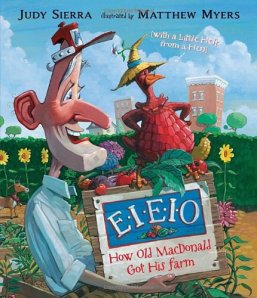
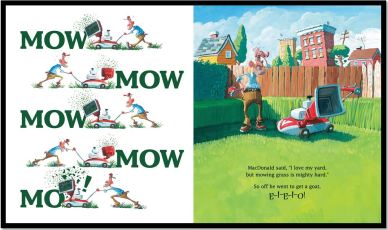
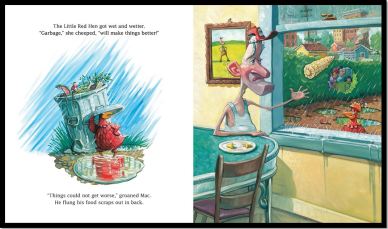

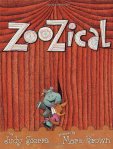

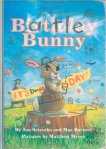
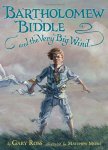



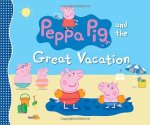

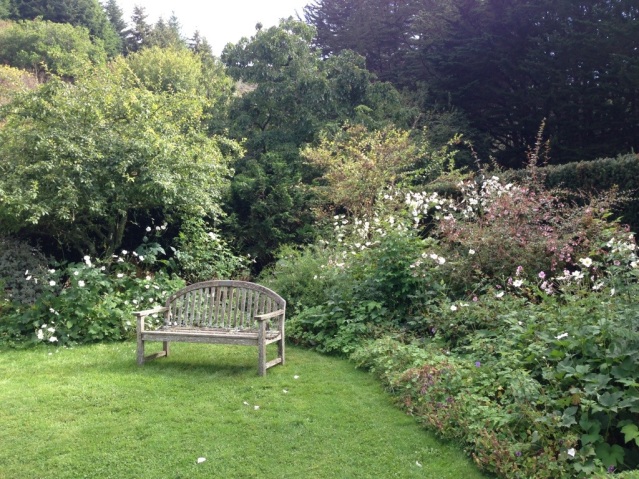















So pretty! Just like an English country garden xx
xx
I see myself there, feet up and book , or kindle, in hand sipping iced tea with a big brimmed hat on. So peaceful:)
Yes. And it’s a meditative garden. So wonderful. *waves* thanks for stopping by Suzy
I see you heading toward me where I’m seated on the bench. I wave, my sketchbook and pens in hand. I pick up my glass of iced tea and we cheer to an afternoon of creativity! *waves* Thanks for joining me today